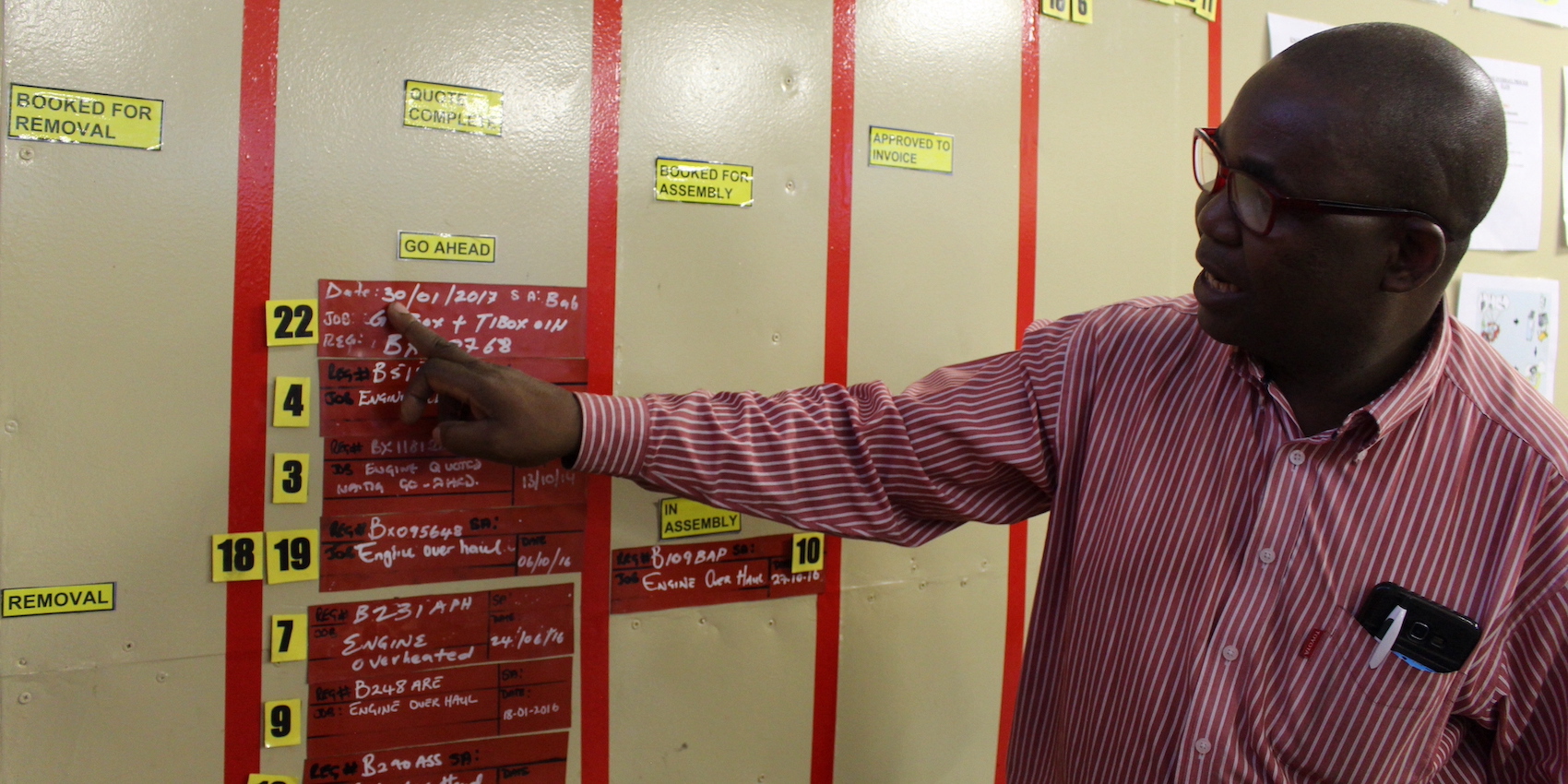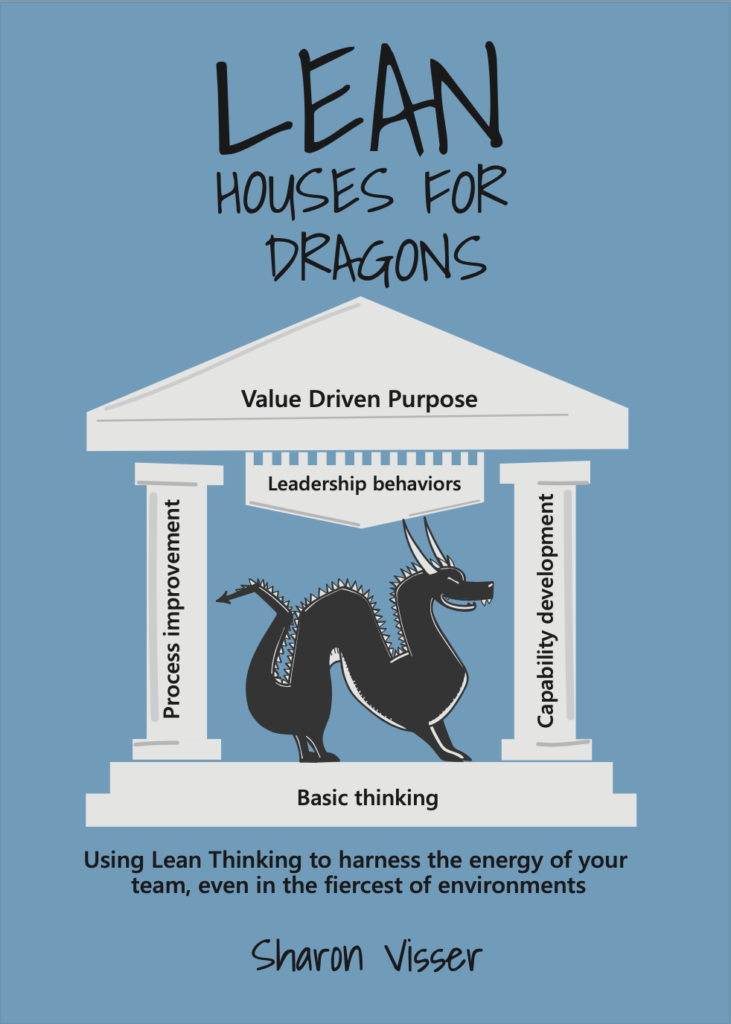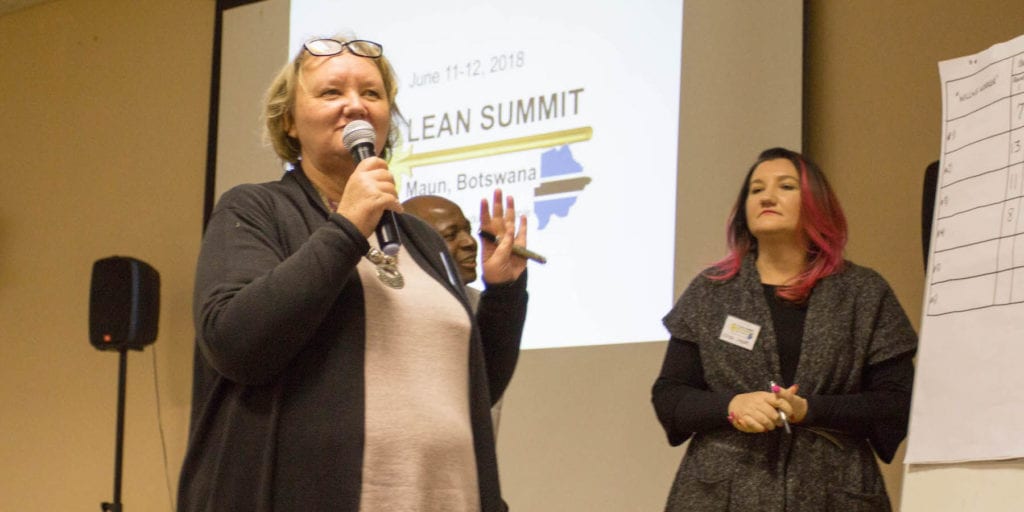
How the gemba shaped my leader standard work
FEATURE – Sharon Visser shares her leader’s standard work from when she ran the Ngami car dealership and encourages us to use what we see at gemba to shape our own.
Words: Sharon Visser
<hr>
People often ask me for tips on how to create standard work for leaders and what I always tell them is to start from the gemba (yes, it is the leanest of all answers).
Indeed, a large portion of my lean leadership standard work was developed around gemba walks. I thought that I would try to communicate a typical day to see if it will assist you all in developing your own leaders’ standard work. Before I do this, however, let us remember that everything is situational. My job was in a remote area of Africa, where harsh conditions, distance from suppliers and varying educational levels impacted how I led my team. Your situation will no doubt be different, but I hope that what I have to say will still assist you nonetheless.
Below is how my day at work would unfold. Obviously, the times did not always match, as some places would be quicker than others depending on what I saw and what questions I had to ask. But I believe that most days the average times were as below.
7:15 am - Drive into the premises before arriving at the gate, I would see the vehicles belonging to our large fleet customers driving into the receiving parking. I would see the service administration staff prepare to receive cars into the service center. As the vehicles move, I look to see who was on duty, how many vehicles were waiting for service, and if everyone was in position. I could see because everything had its place and receiving was done in single-lane flow.
7: 18 am - Drive through the gate to my parking place once again, looking to see if anything is out of place, indicating a problem – like vehicles already in the parking zone for Wash Bay or vehicles badly parked that prevent us from maintaining our daily 5S.
7:20 am - Get out of my car and head to my office, walking past the maintenance board (basic Kanban - to do, doing and done). Here, I can see if we are behind on the board or if all tasks are complete.
7:30 am - Pick up the standard work notebook in the office and then walk onto the showroom floor, checking if it is being cleaned. I greet the sales consultants checking if they are at their desks and if they are in full uniform with their name badges. I walk past the parts sales counter, greet all the staff, glancing at their Andon squares to check for overflows or see if there were customers waiting for assistance.
7:40 am - I then walk through the workshop reception, seeing who is on duty and if they are in full Toyota uniform with badges, greeting everyone and glancing at the Andon squares to look for problems and overflow.
7:45 am - Walking through to the vehicle receiving zone, I greet the team receiving vehicles. I always watch the work to make sure they are sticking to the agreed standard and takt time.
Check to see if the technical assistant is available for complex issues and if, for any reason, there is anything out of place causing a bottleneck. I observe if the Andon response team is able to cope with the blockage in the single lane flow.
8.15 am - Move to the service center administration office to greet the ladies capturing the job cards that come into the post box between their desks. These job cards have been posted through the wall to prevent walking. I ask them if they have any issues and look at their booking chart to see how many vehicles we expect that day.
8.25 am - Walk to the service manager’s office to greet him and then head to the workshop facility, checking if everyone is wearing safety gear and counting hands-on vehicles. I observe each working bay: every technician should have a car to work on and have their hands on the vehicles. I glance at the parts supply window to see how many technicians are waiting for parts, then at the attendance visual to see who is not at work. After doing this, I calculate the current productivity of the workshop.
8:40 am - Walk around the yard, checking if vehicles are parked in the correct zones. We have Green Bay (quick service lane), Orange bay (Prediagnostic bay), red zones for more complex work or jobs waiting for part or for a go-ahead from the customer. Every vehicle tells its own story through what staff has written on the windshield at receiving.
9:00 am - Walk to the Wash Bay to look at its visual and see if we relate to the bookings I have seen in workshop administration or if we are dealing with carryovers. I always make a point of greeting staff and checking that they are wearing safety gear. A short meeting with the Wash Bay supervisor ascertains whether she expects any issues, be it a water shortage, a staff shortage, or an equipment issue.
9:20 am - Walk back through the workshop mentally calculating the touch time, walking to the engine/gearbox room, looking at the visual with the technician to see if he wants to communicate anything to me. Once again, the greeting and checking for safety gear.
9:25 am - Walk past the accounts office and greet the team before walking through Parts. Once again, checking safety gear. I then visit the parts storage, ensuring that it is clean and tidy, check the delivery visual to see if our logistics company is delivering on time, and then look at the special orders graphic for sales over the front counter and through the workshop window. I talk to the person responsible for the visual to address any issues and then greet the team.
Once a week I skip the early morning walk to attend the vehicle sales meeting, where the sales team goes through their sales funnels and updates the order board. After this meeting, I continue the gemba walk as usual and take the time out of tasks listed below.
10:30 am - Back to my office to answer emails and read the financial reports for the previous day. The time after my walk is my opportunity to carry out other tasks, such as attending marketing or HR meetings or writing Toyota reports.
12:00 am - I walk again to the Wash Bay to look at their visual as it tells me if the entire workshop is ahead or behind and allows us time to address problems before they impact the customer. On my way over to the Wash Bay, I look for signs of anything being out of place.
3:50 pm - Walk to the Wash Bay, to check if there are any bottlenecks. This simple visual tells me if we are ahead or behind, if we have the solved problems we see at 12, and if any emergency actions is needed.
4:00 pm - Attend the Service Centre huddle in front of the job stoppages visual. This visual requires the full service Centre management team to attend and update their areas of responsibility.
5: 40 pm - Drive out of the yard once again looking for visual signals of a problem, like a breakdown vehicle with tourists requiring assistance, technicians working late on a vehicle, or unwashed vehicles in the Wash Bay parking.
During the Gemba walk, I would write notes in my standard workbook and tick where I had been just in case I was interrupted by a customer. This way, if I could not make the whole round, I would have a record to ensure that everyone saw my face daily and that they had the opportunity to raise any issues with me.
Doing this religiously over time, I learned to ask questions that allowed me to develop myself and the departmental leadership to create better work habits. At the end of the walk, I was always aware of what problems the day may bring and knew to what areas I’d need to pay extra attention to see how my team was coping.
It was, of course, during the walks that I developed my relationship with my team members. HR and administration staff often updated me on the health issues or deaths of any family members of our employees. This meant that during my walk I could pull those employees aside and ask them how they were doing.
None of this would have been possible without our visual boards and without the vehicles themselves signalling problems to solve, providing me with questions to ask about the work being done.
So, if you are struggling with standard work, I suggest you first walk your gemba and just try to see. If you can, it should be relatively easy for you to write your leader’s standard work. Where you can’t, you will have an opportunity to engage in some satisfying and team-building questions-asking. This is how we learn to see!
Sharon's unique book - Lean Houses for Dragons - is coming soon! Learn about how, with her humble leadership and determination to make respect for people a key element of life in the organization, Sharon kickstarted an incredibly successful lean turnaround at Toyota Halfway Ngami.

THE AUTHOR

Read more


INTERVIEW – We have come to dread having to interact with customer support representatives, and quite rightly so. Basecamp has made it a mission to bring humanity back to this interaction.


RESEARCH - Offering us a glimpse into how the human mind works and into Toyota's approach to people engagement, this article tells us how to create a better working environment for our employees.


FEATURE - What if it were your staff driving change rather than managers? A focus on improvement at the front line and on people development proved critical to the lean transformation of a Stanford hospital.



CASE STUDY - This article reports on the efforts that Erasmus Medical Center in the Netherlands has made to apply Theory of Constraints to patients' length of stay.

